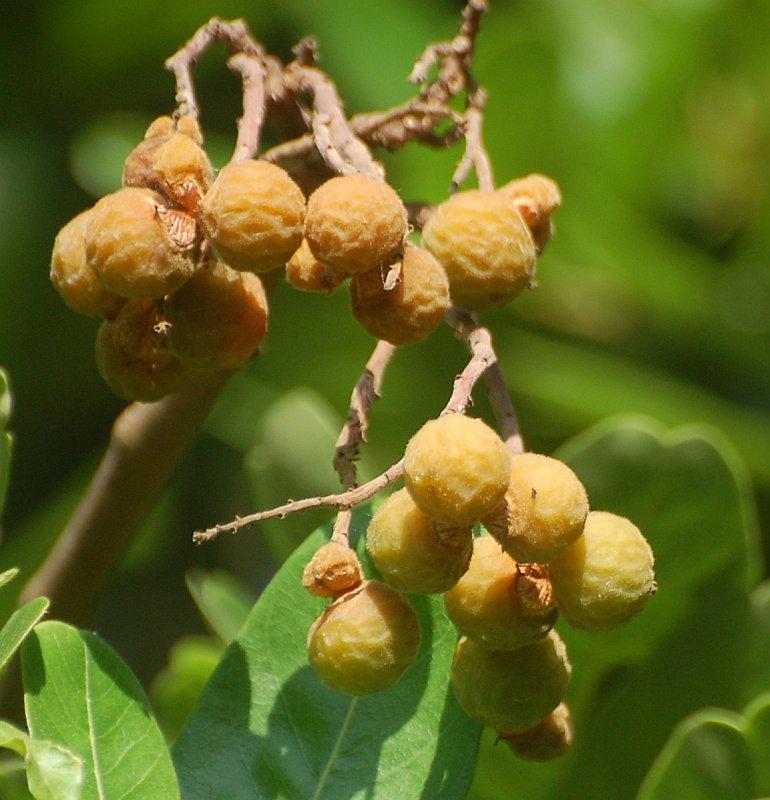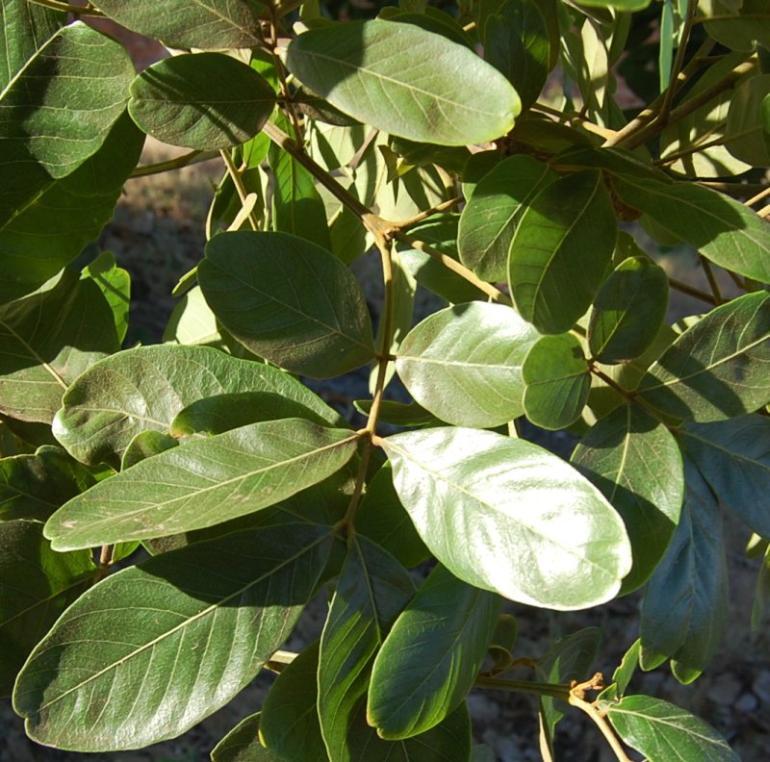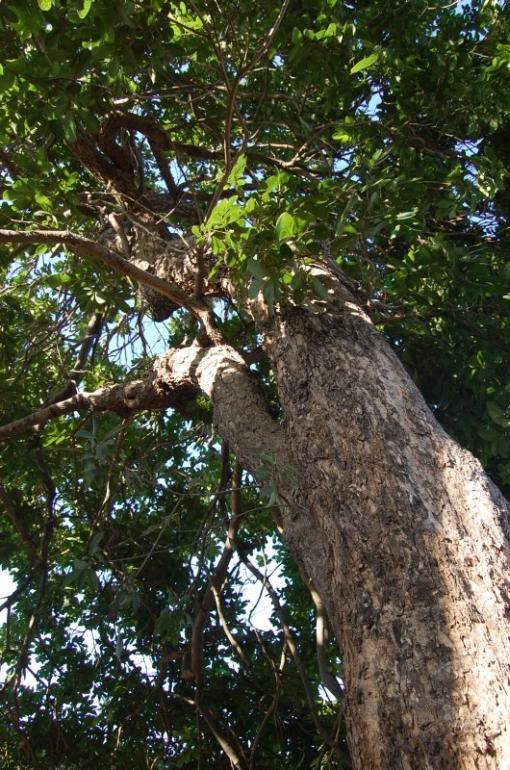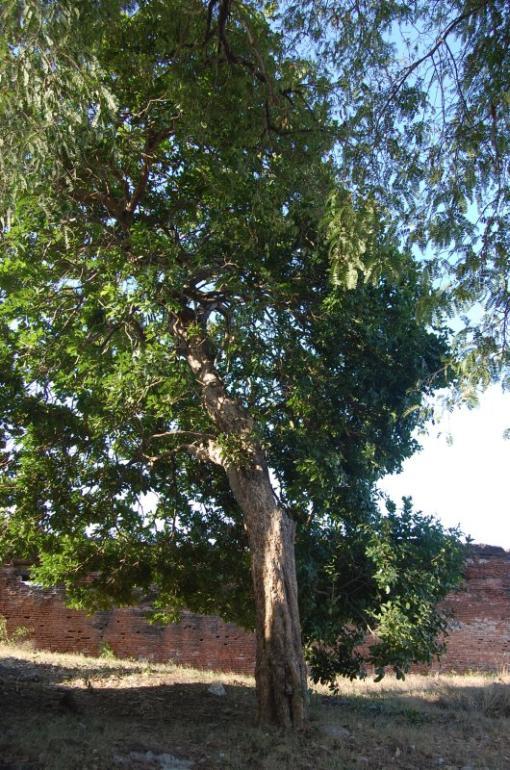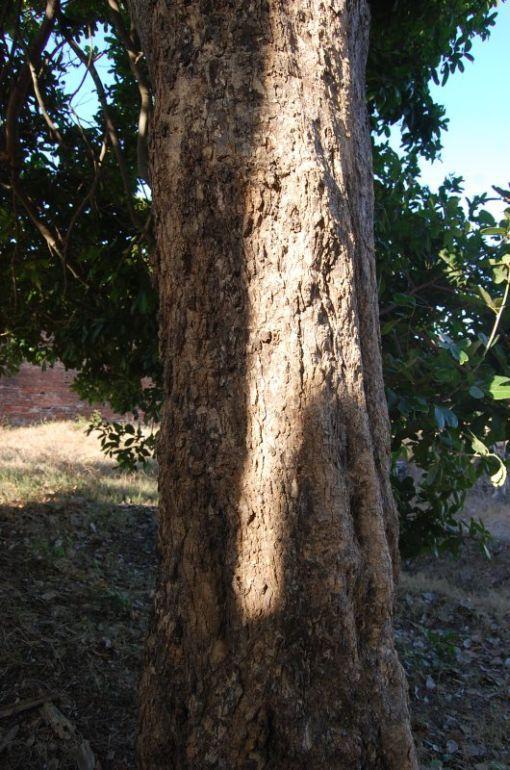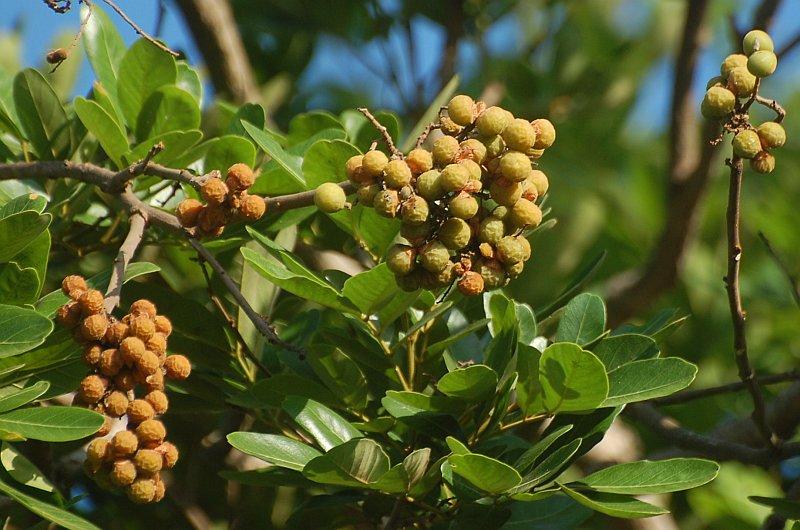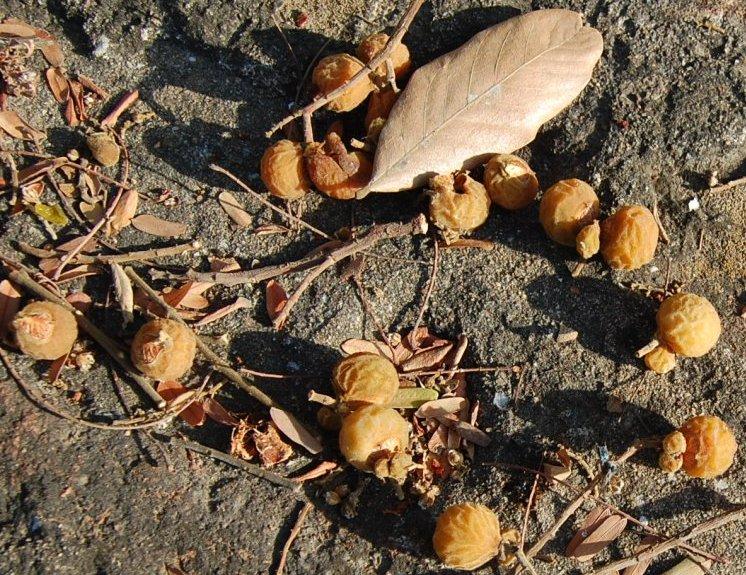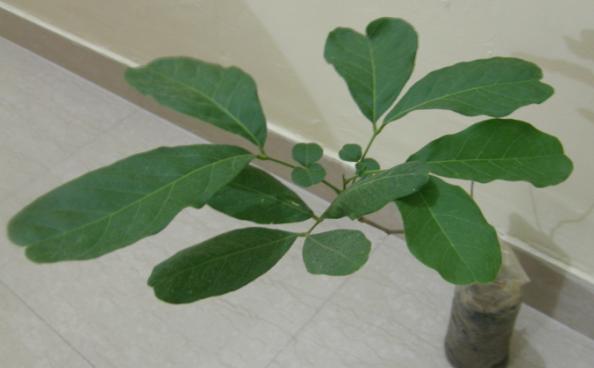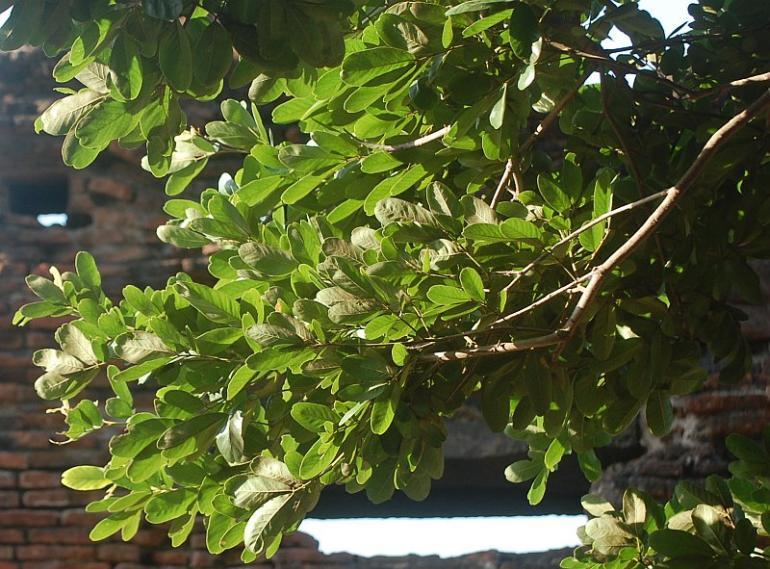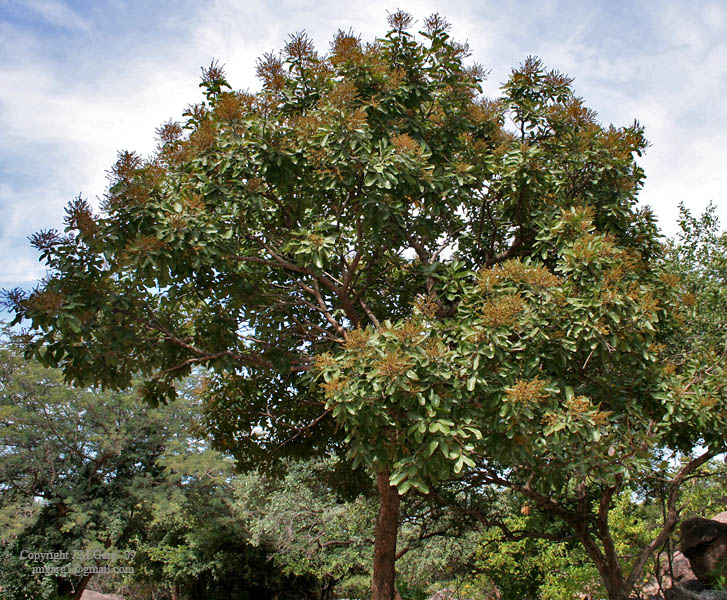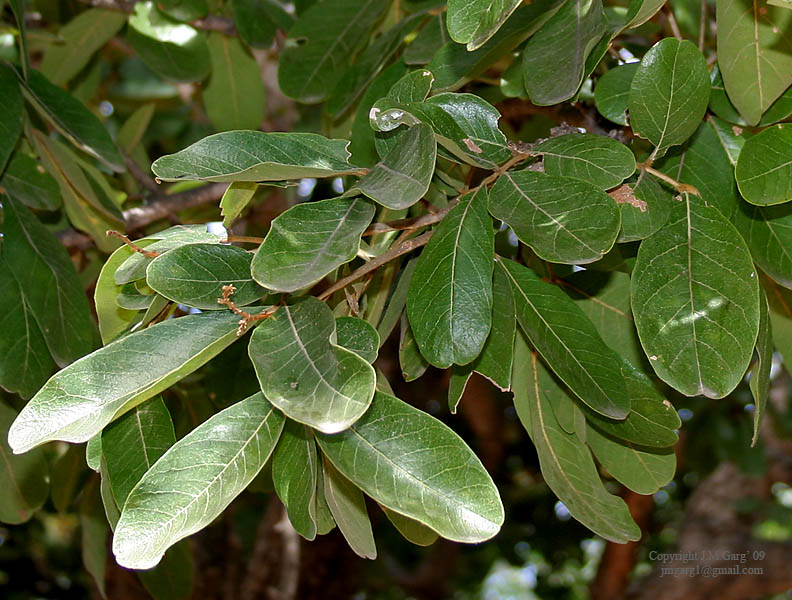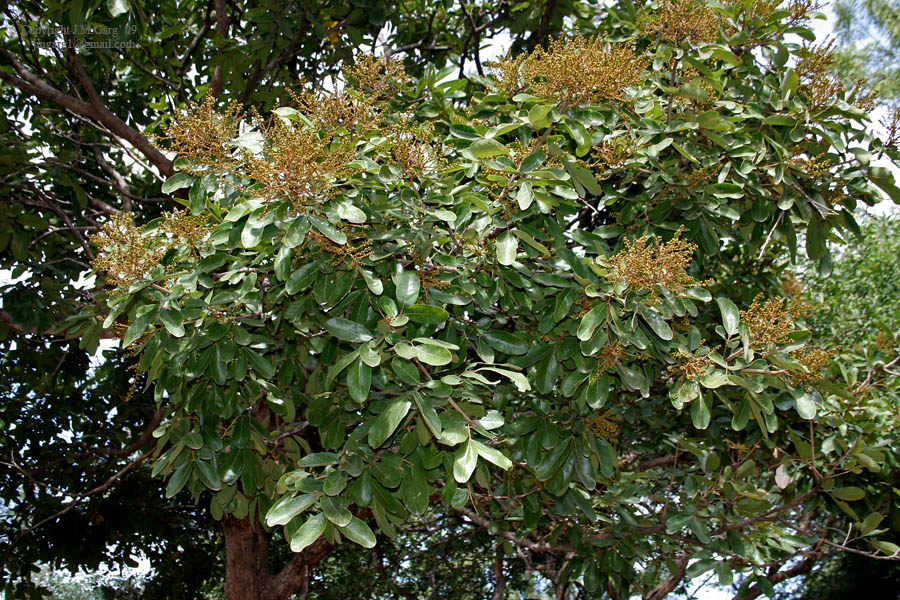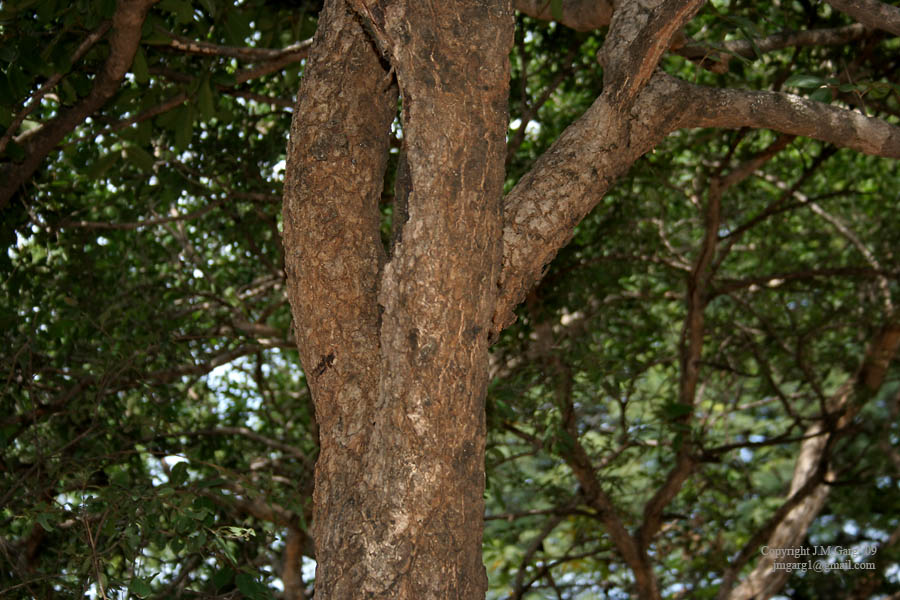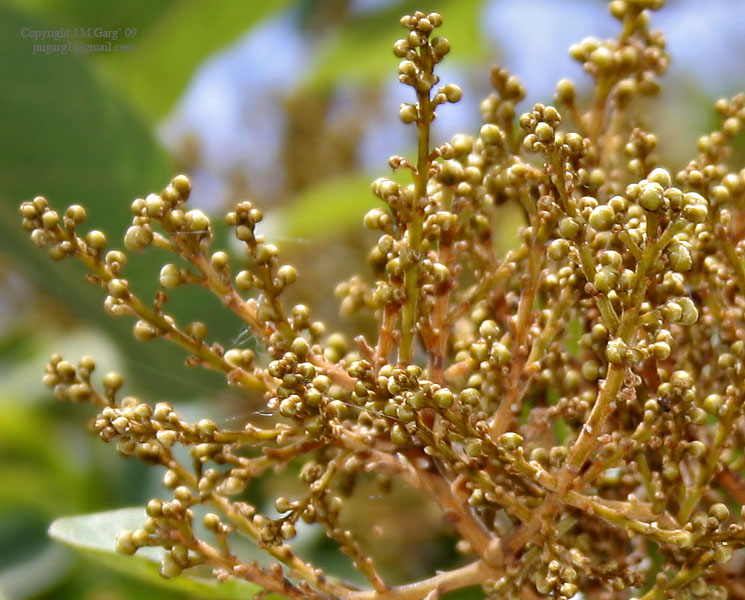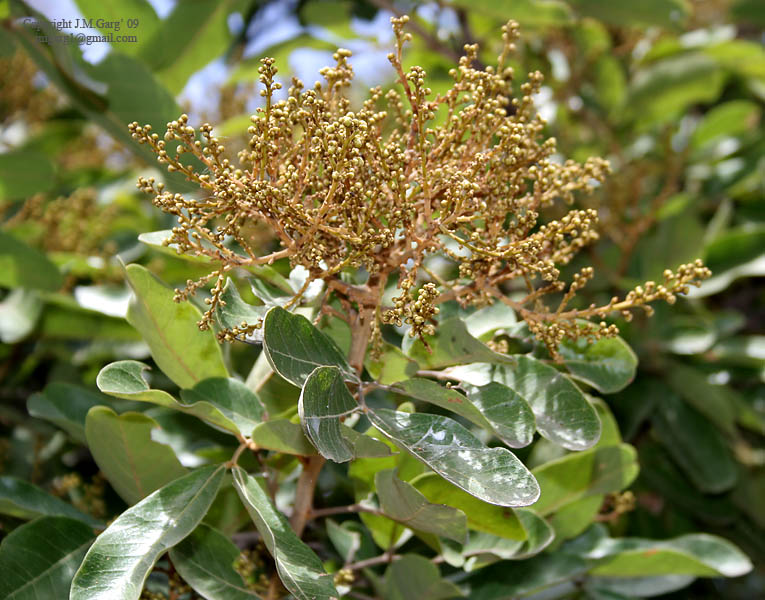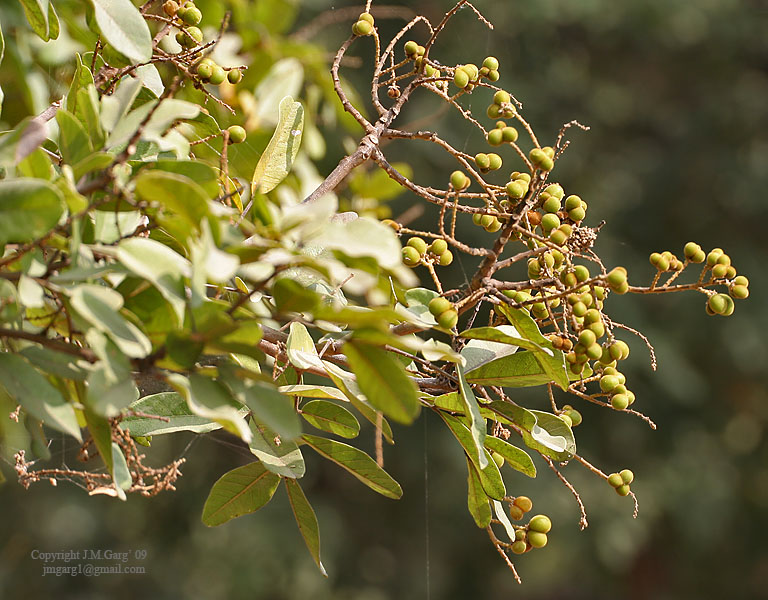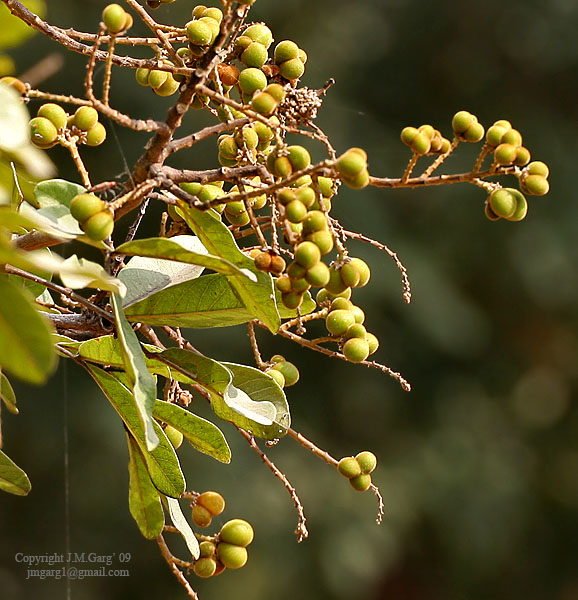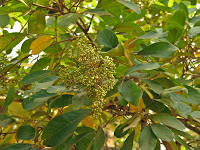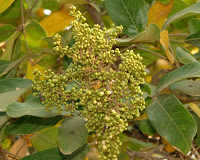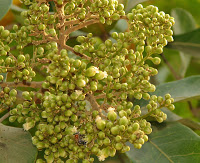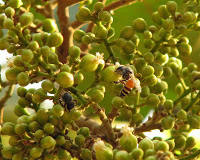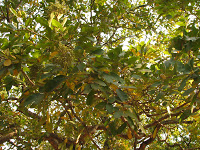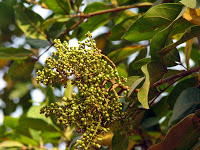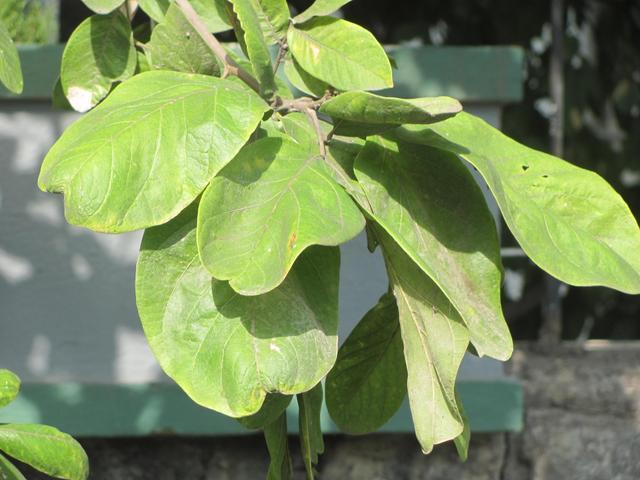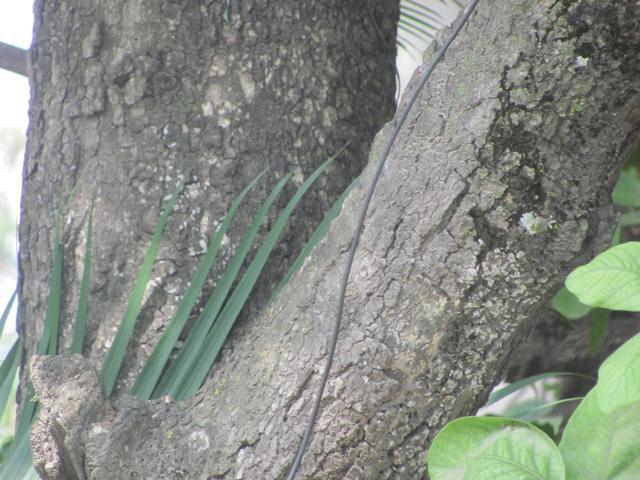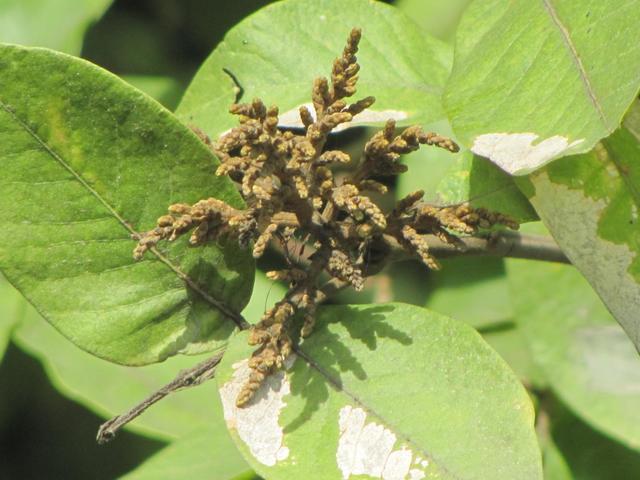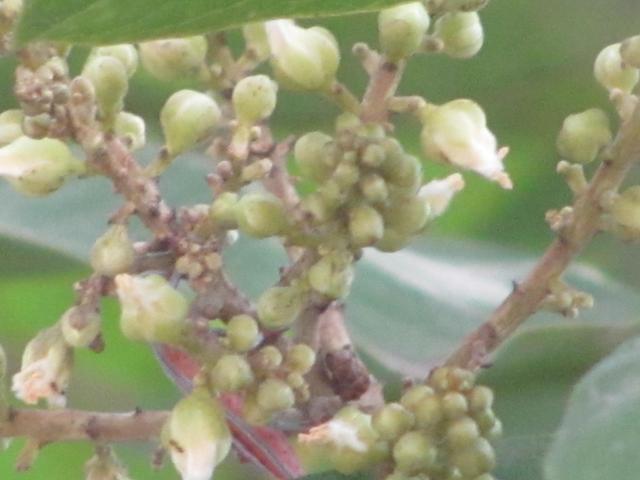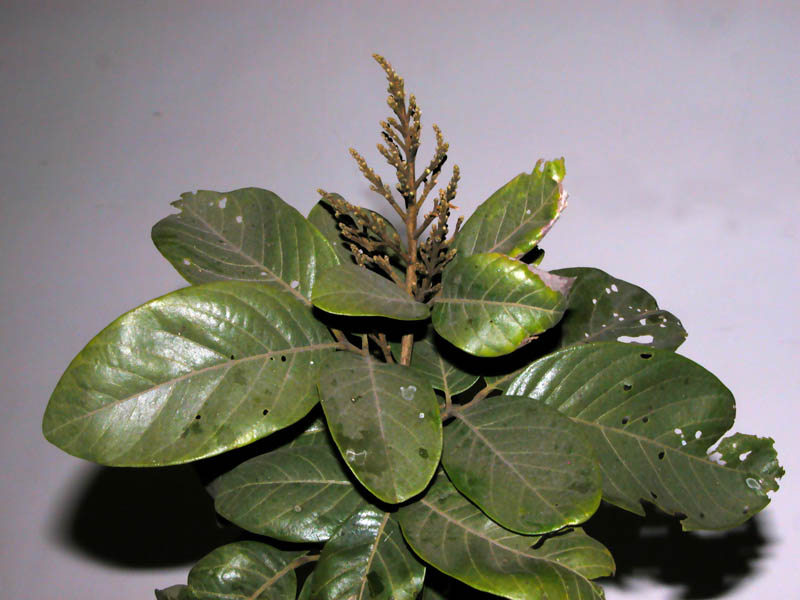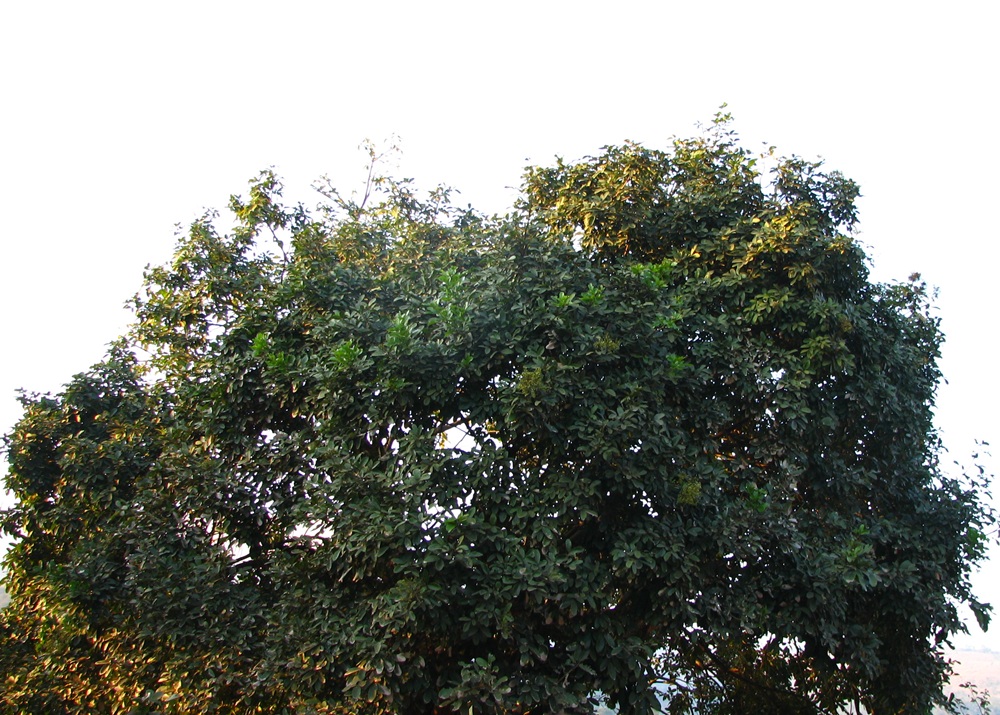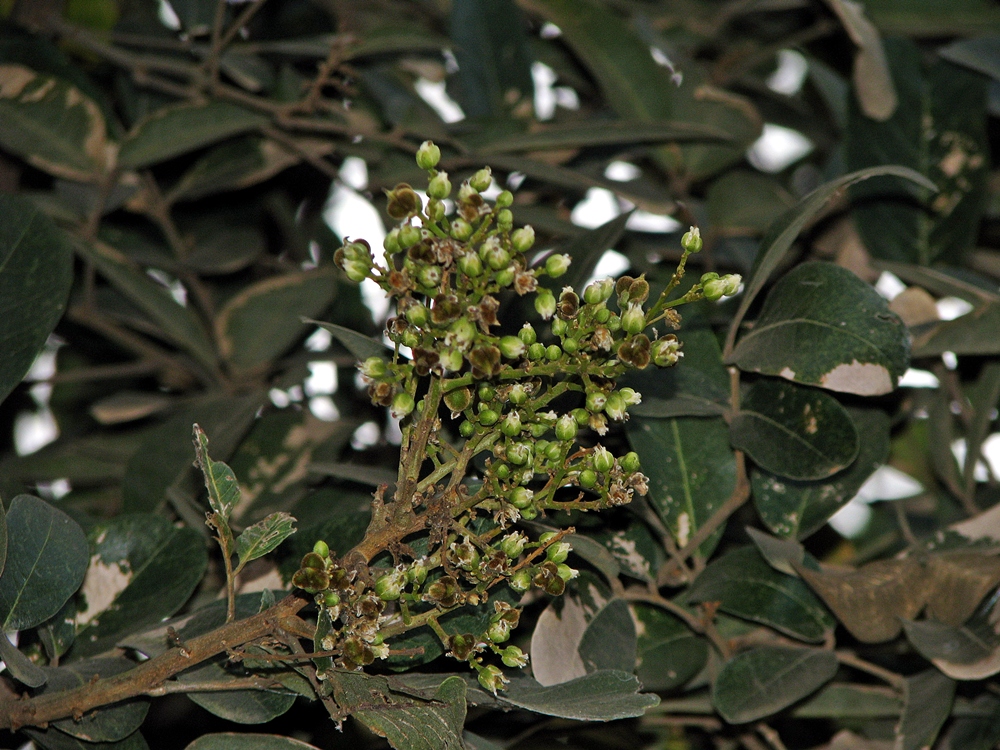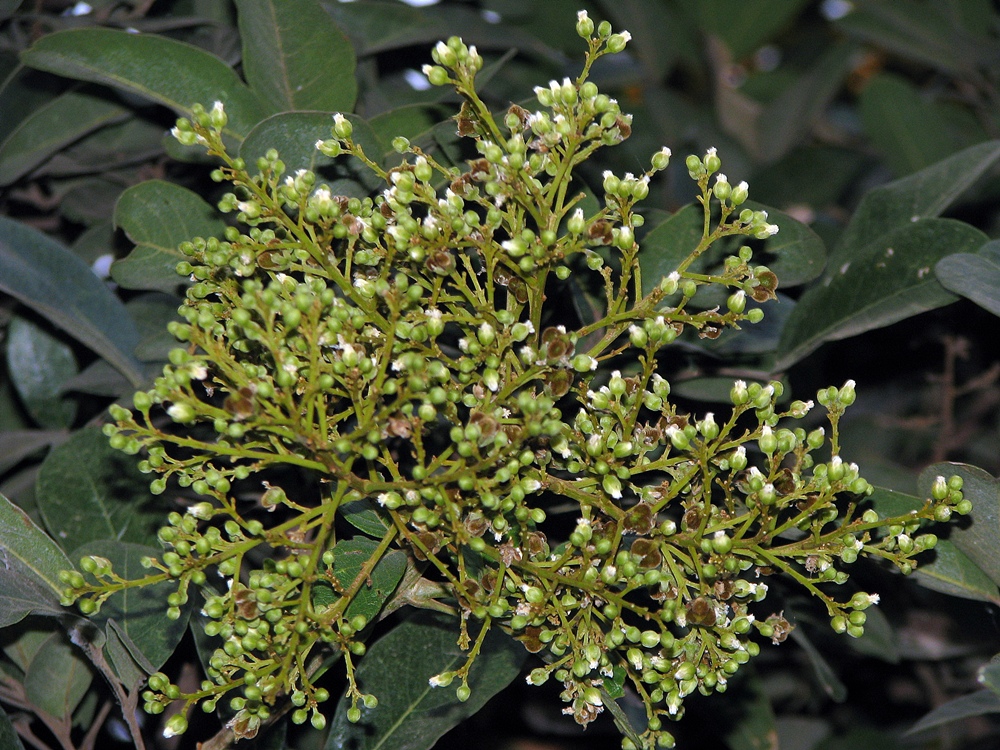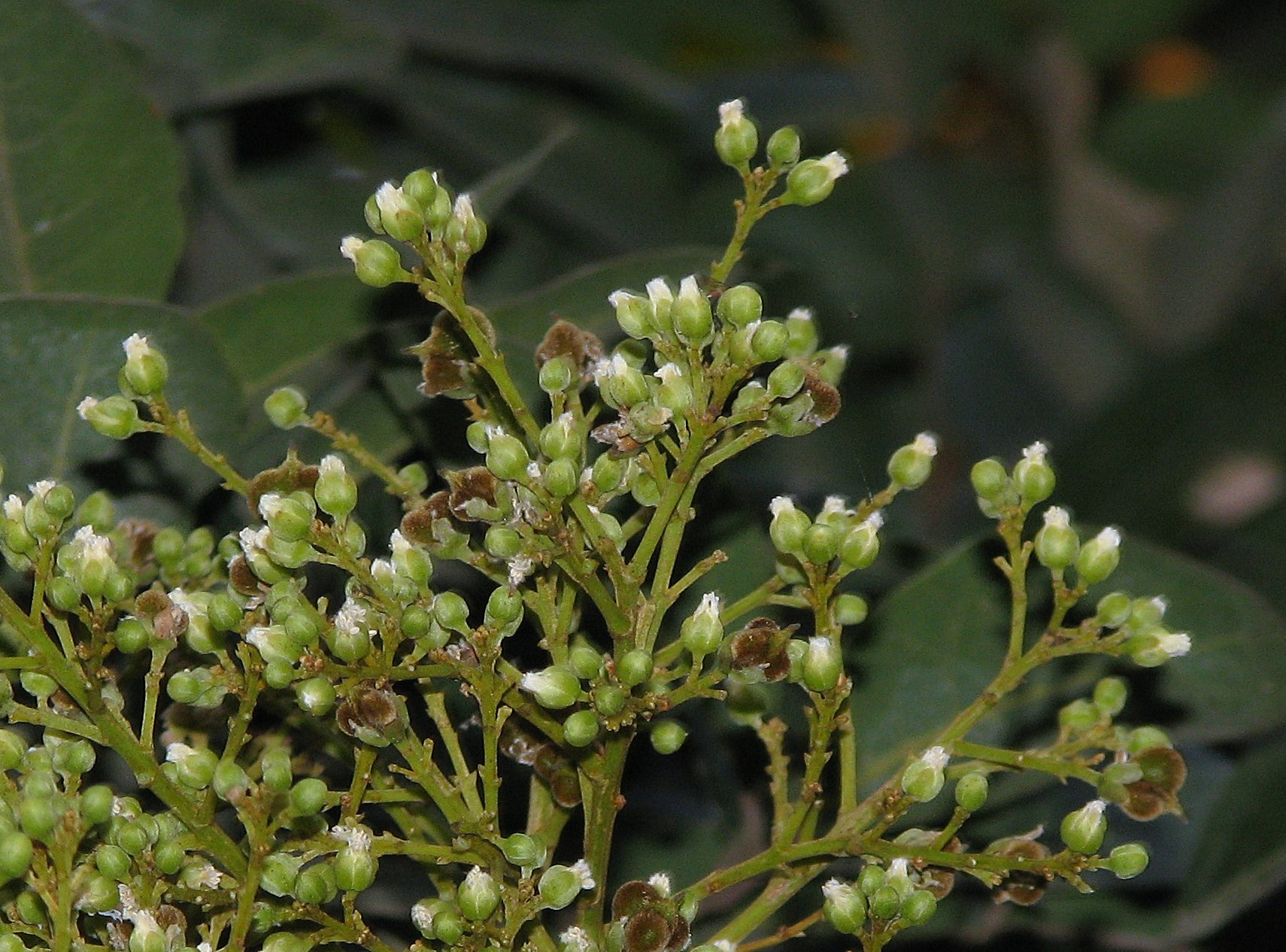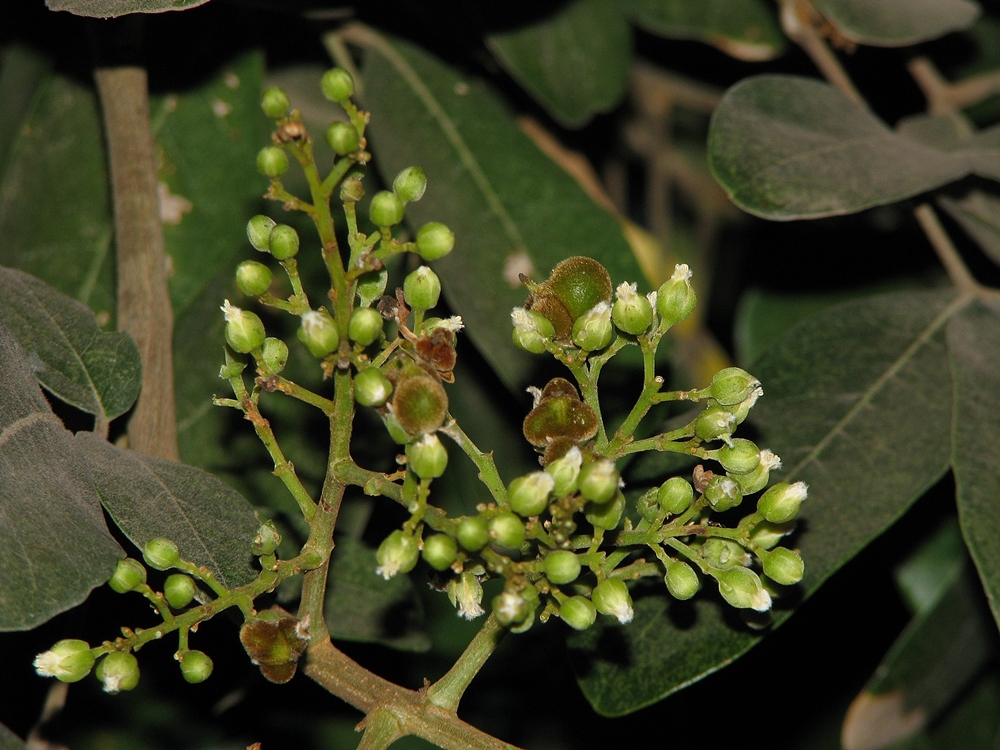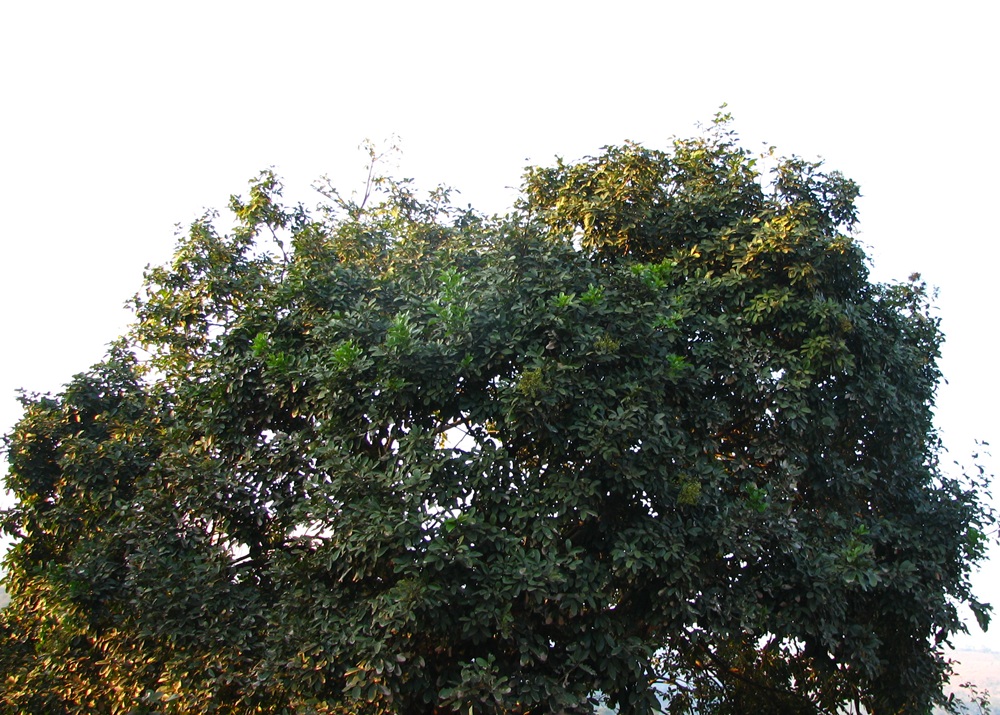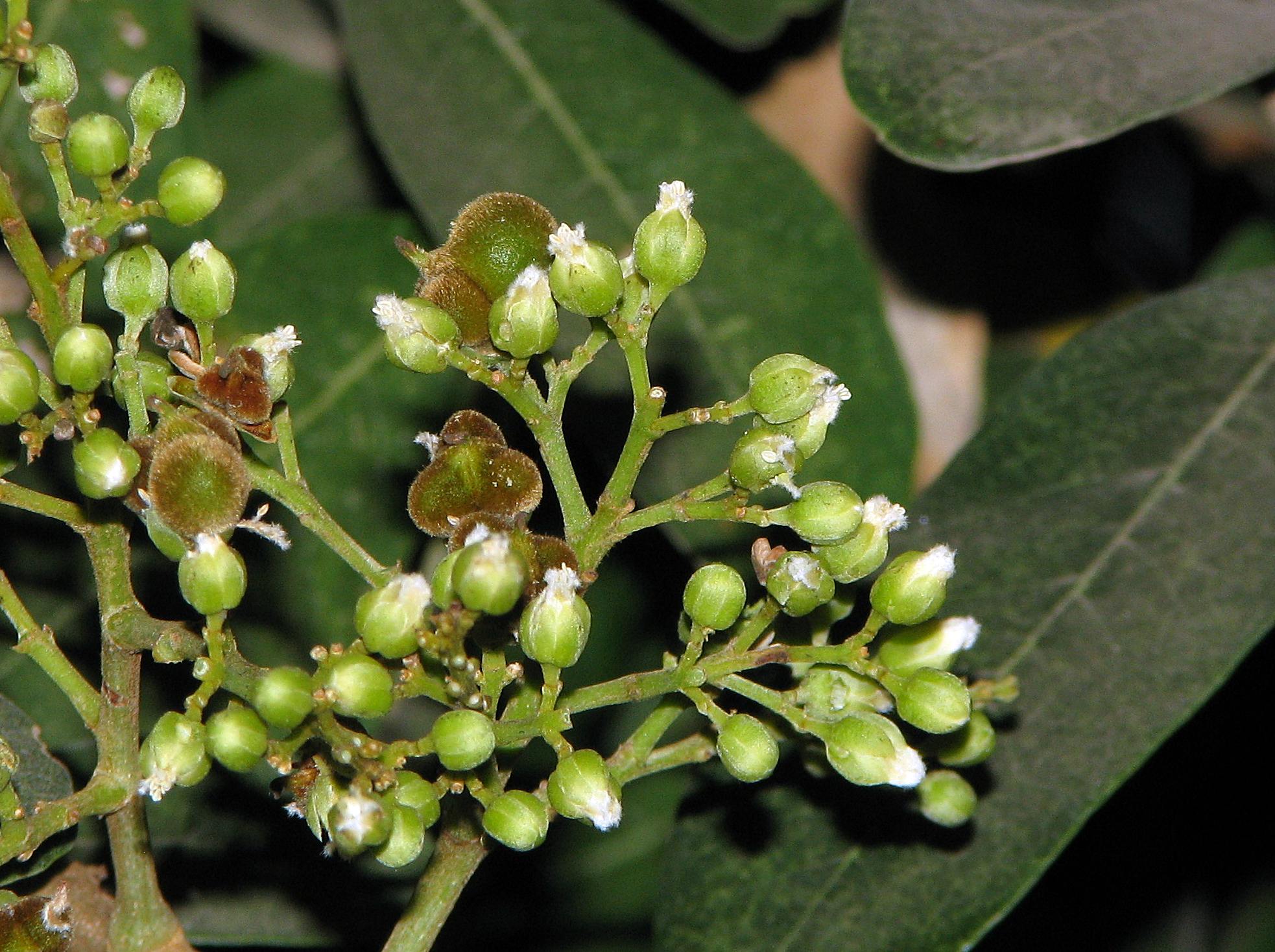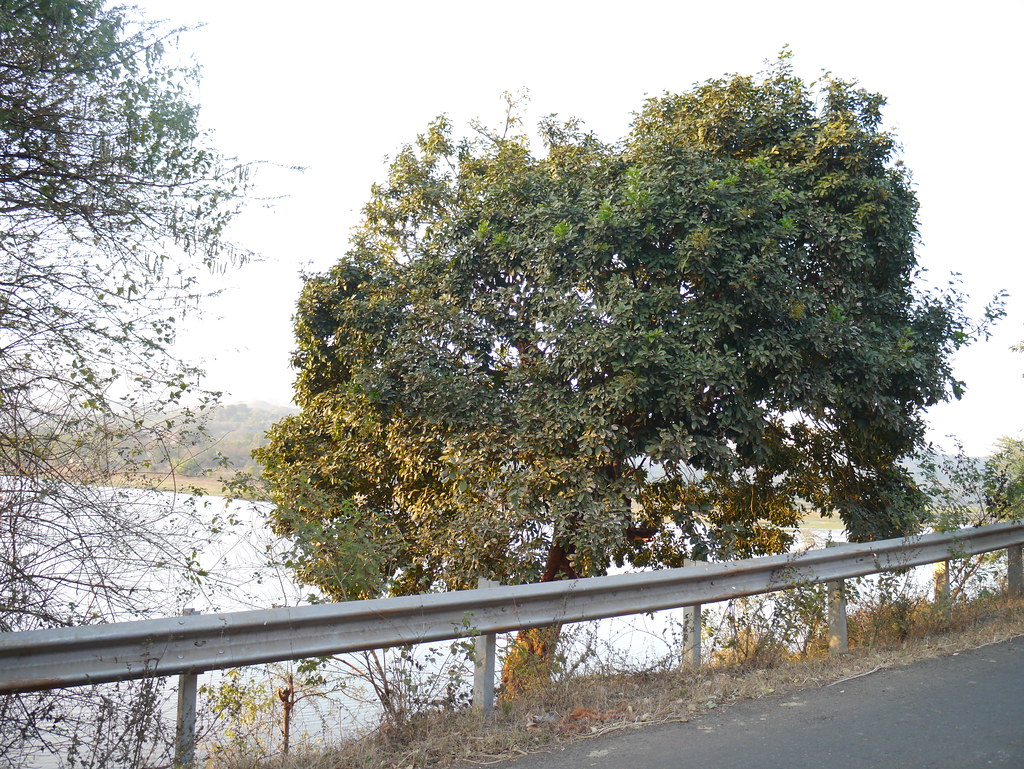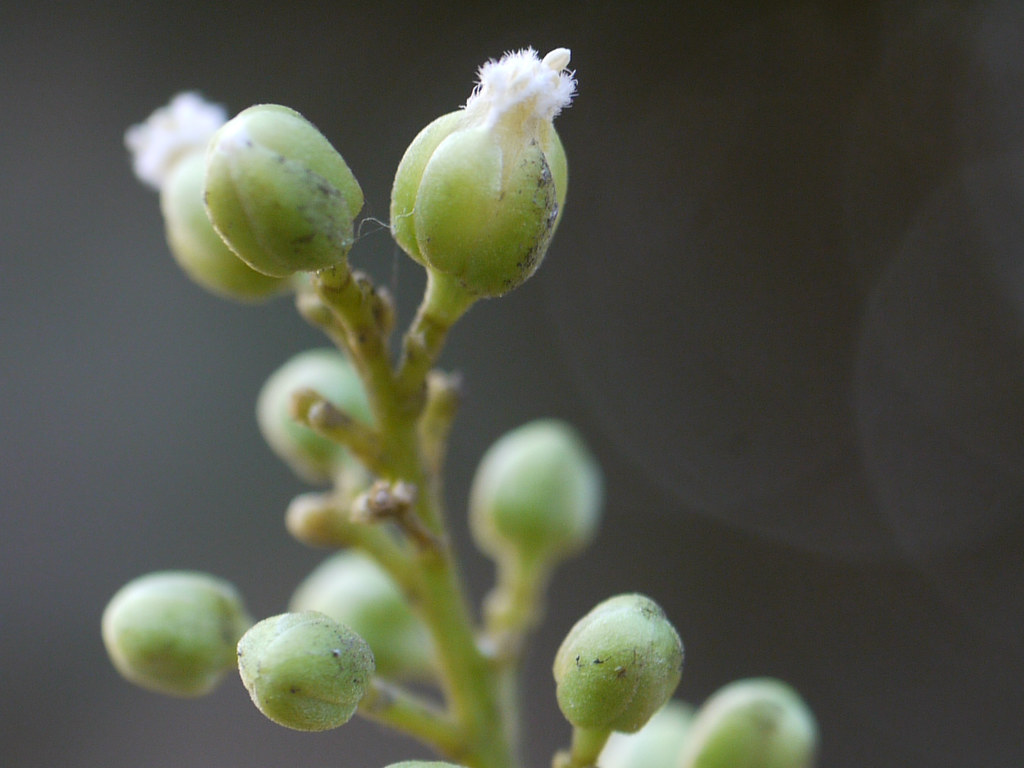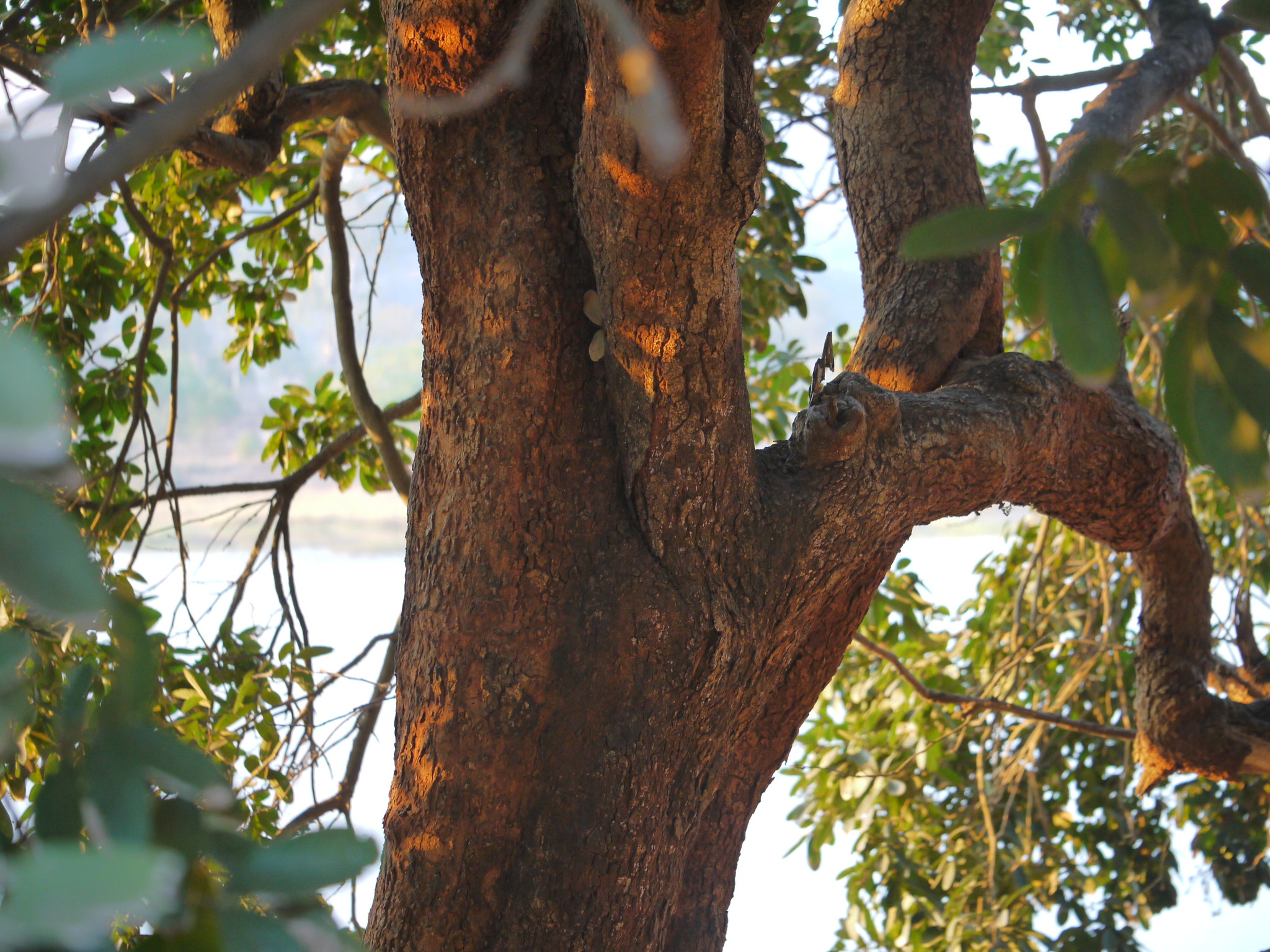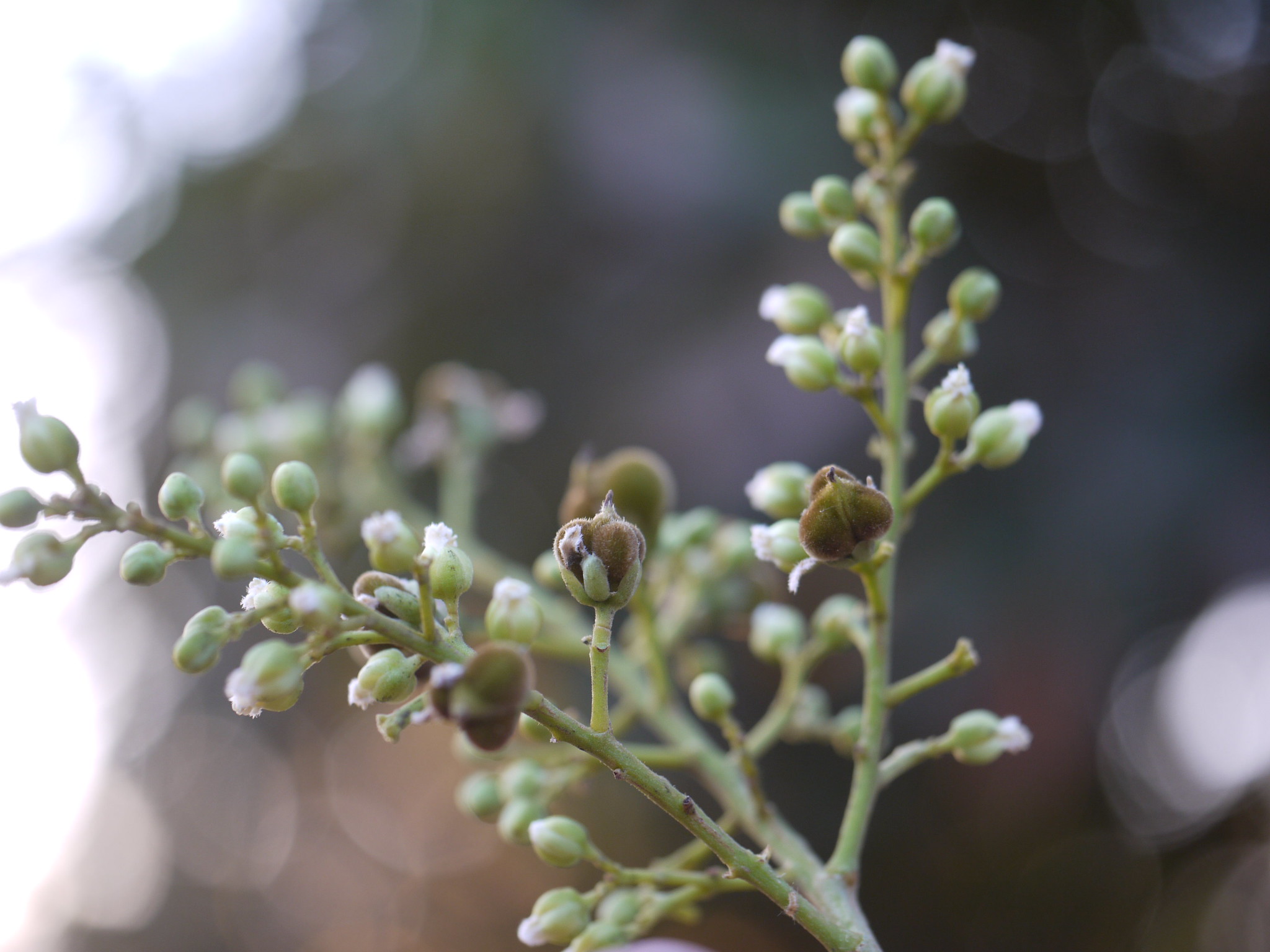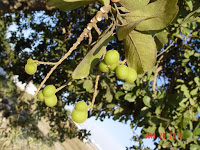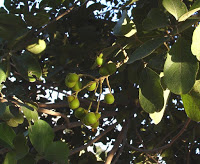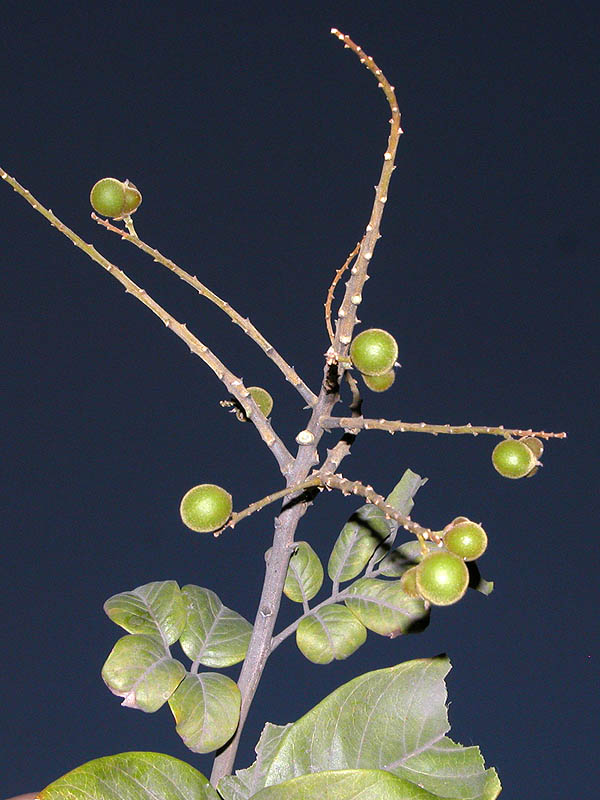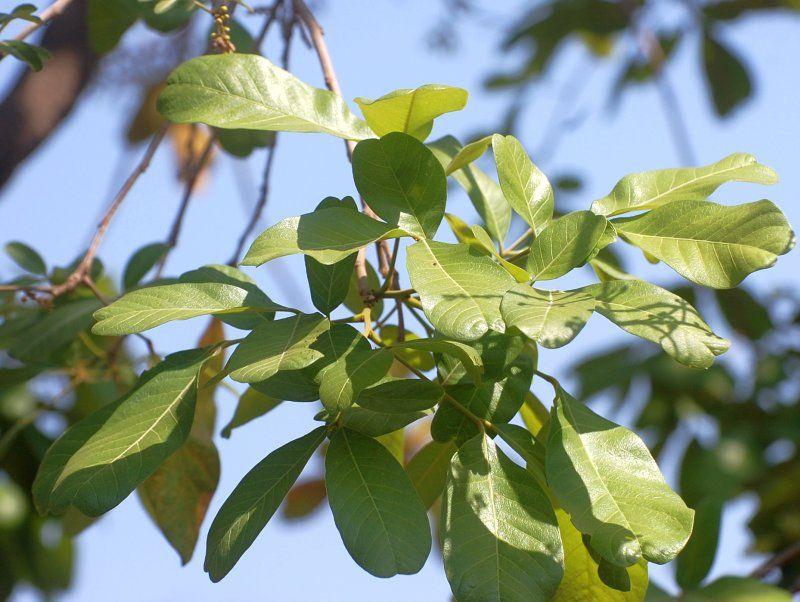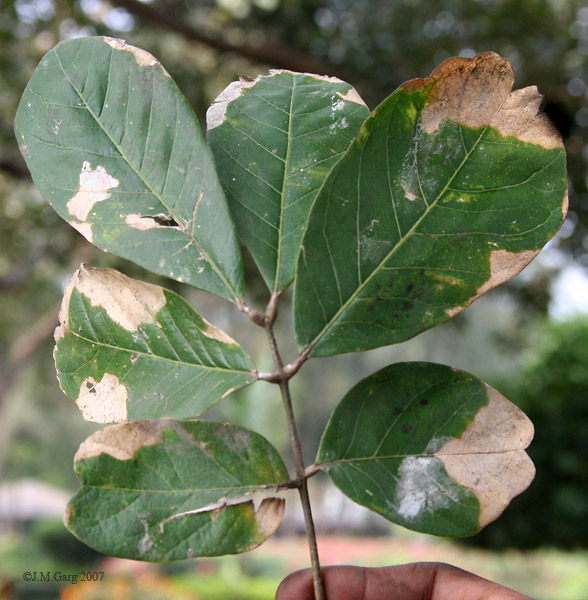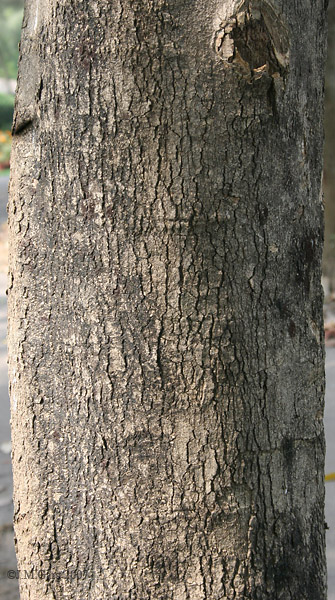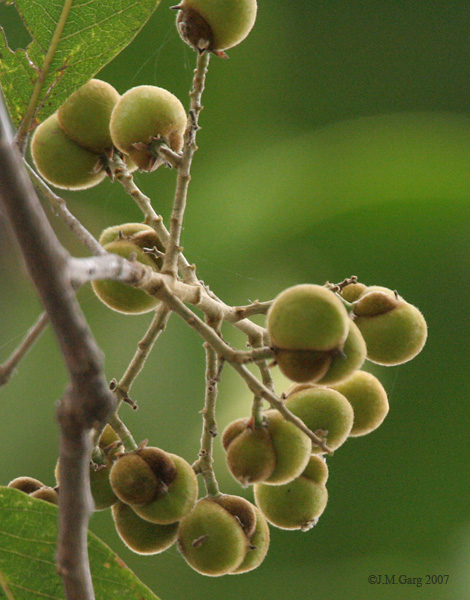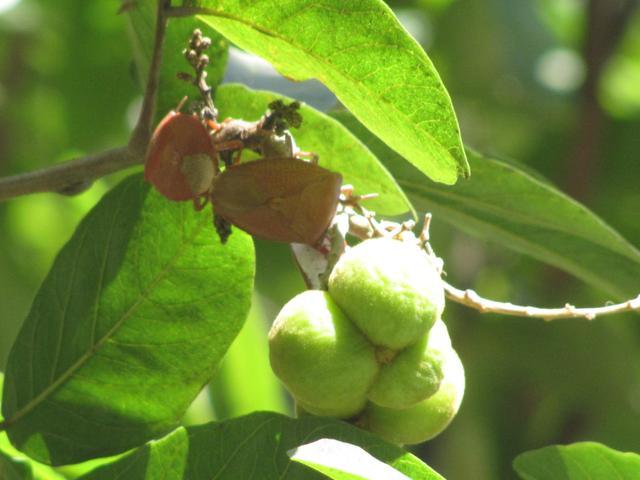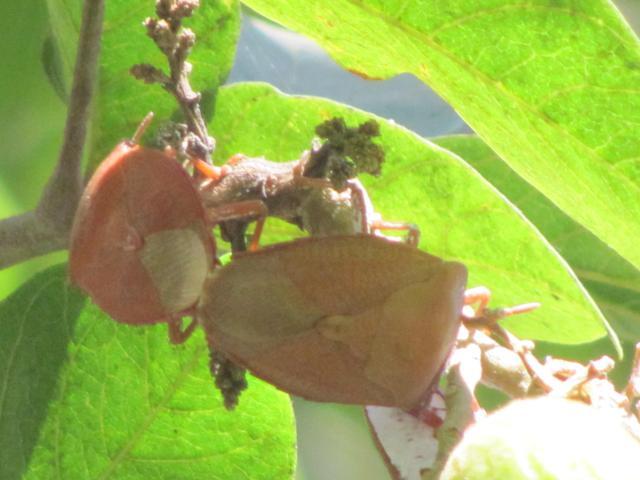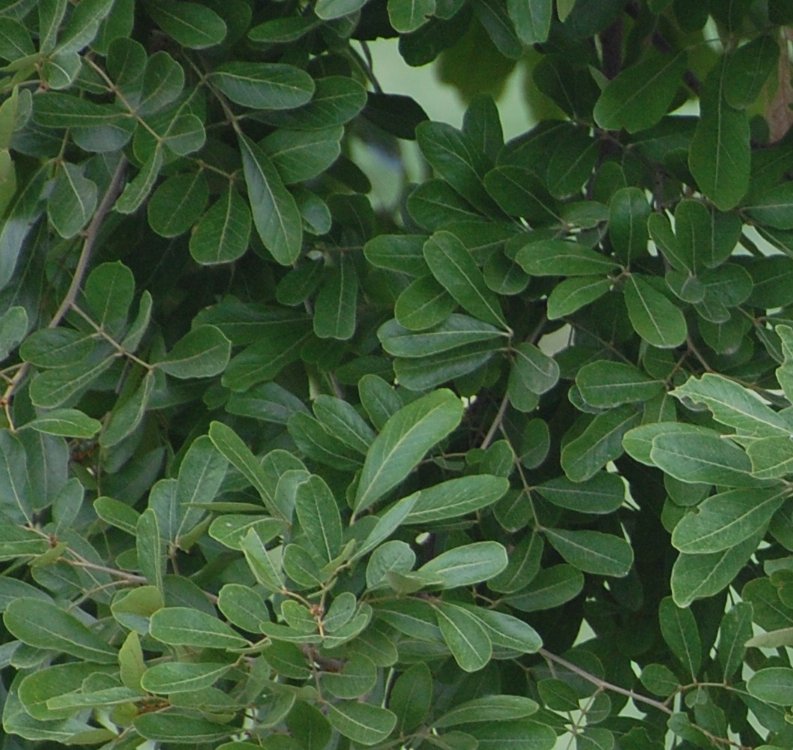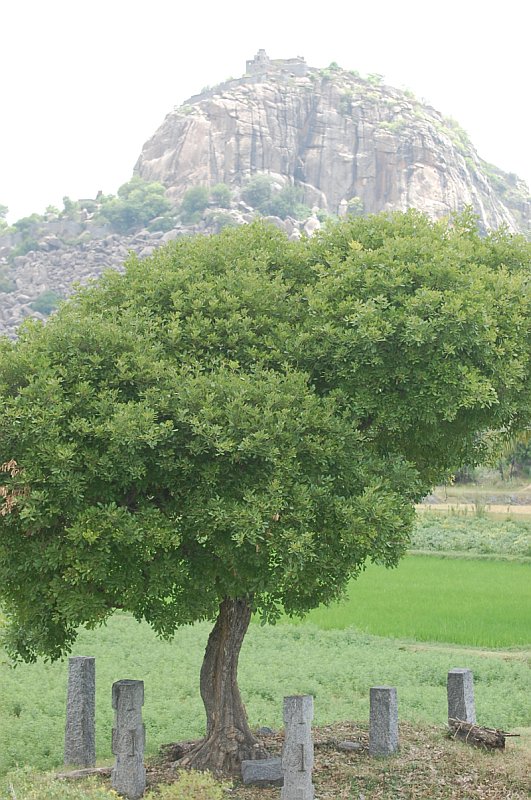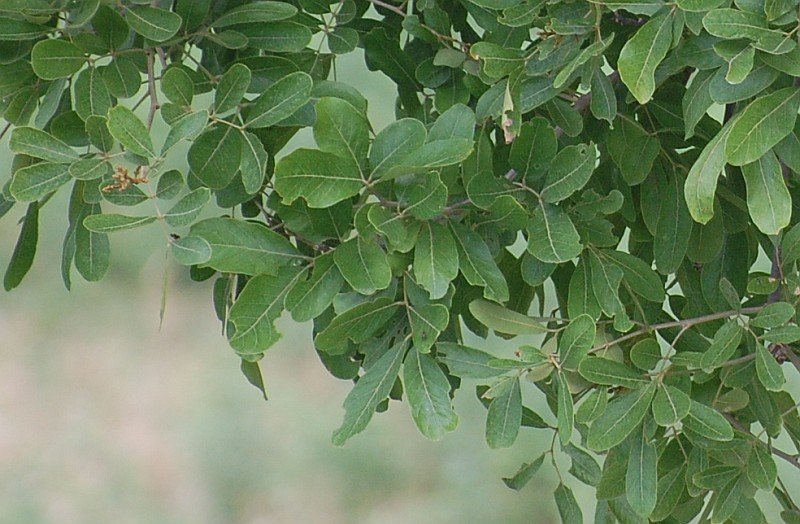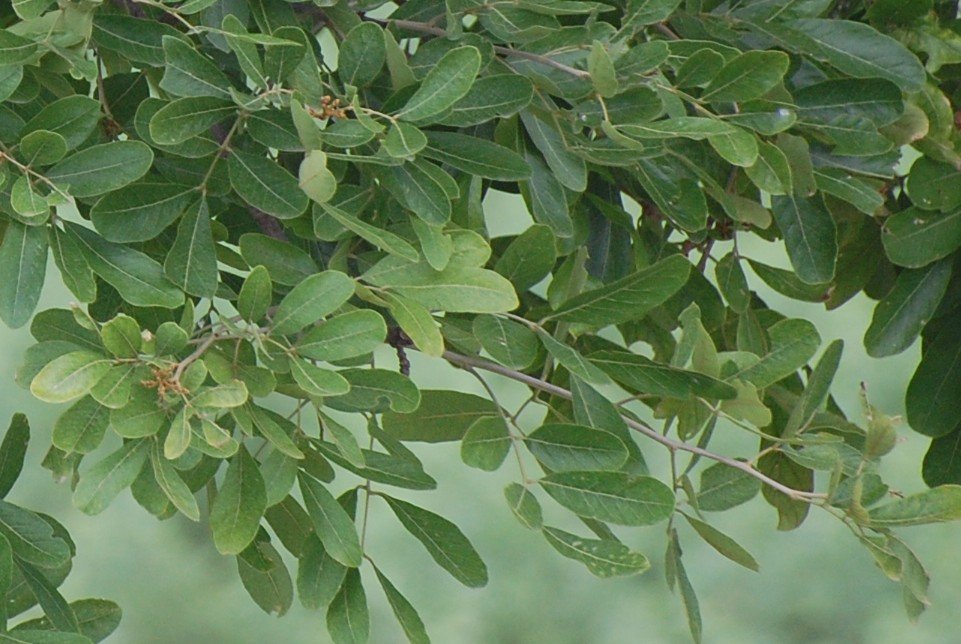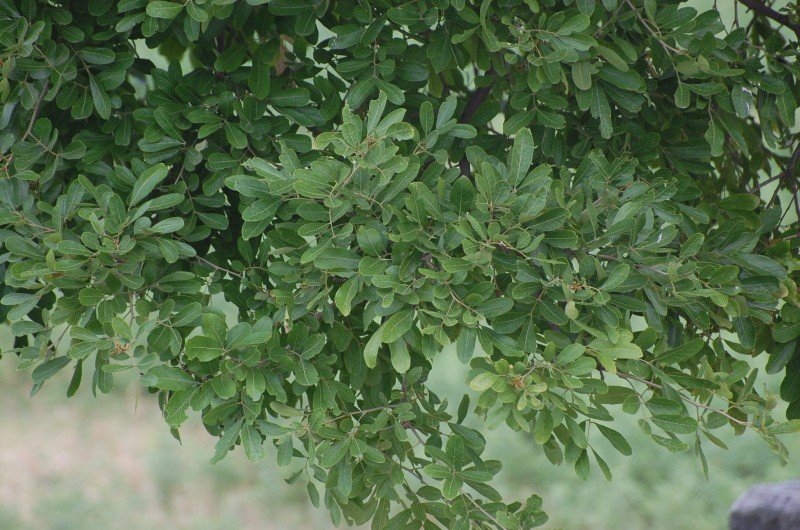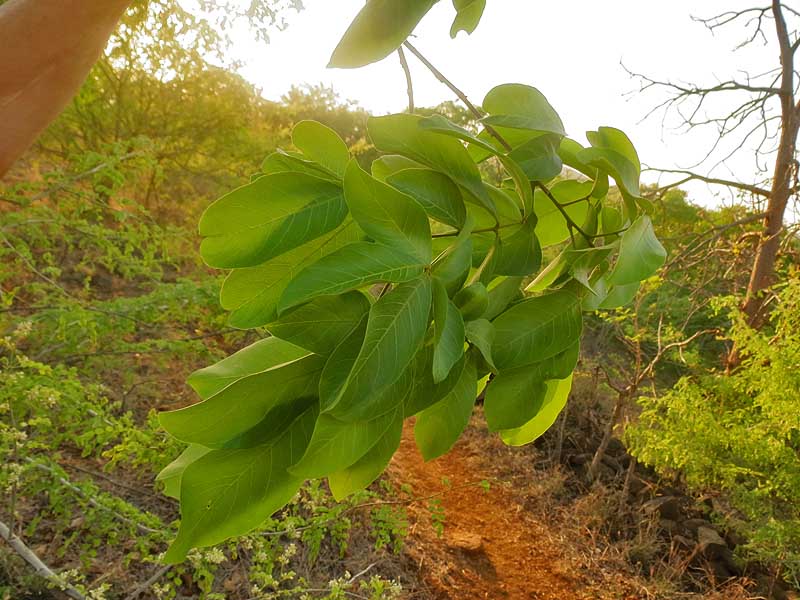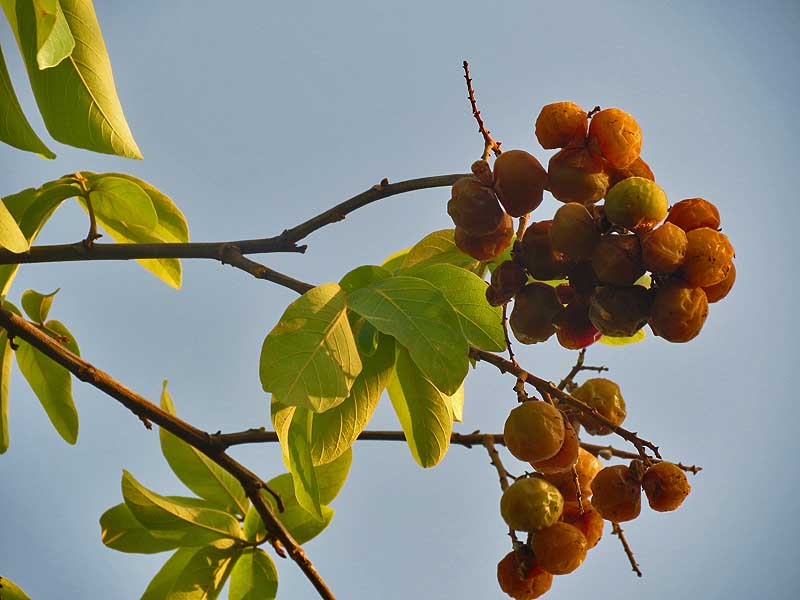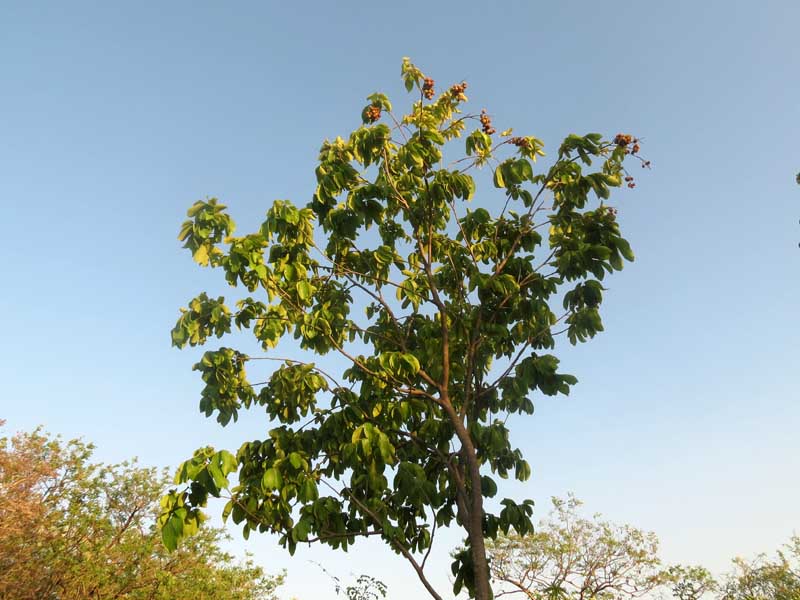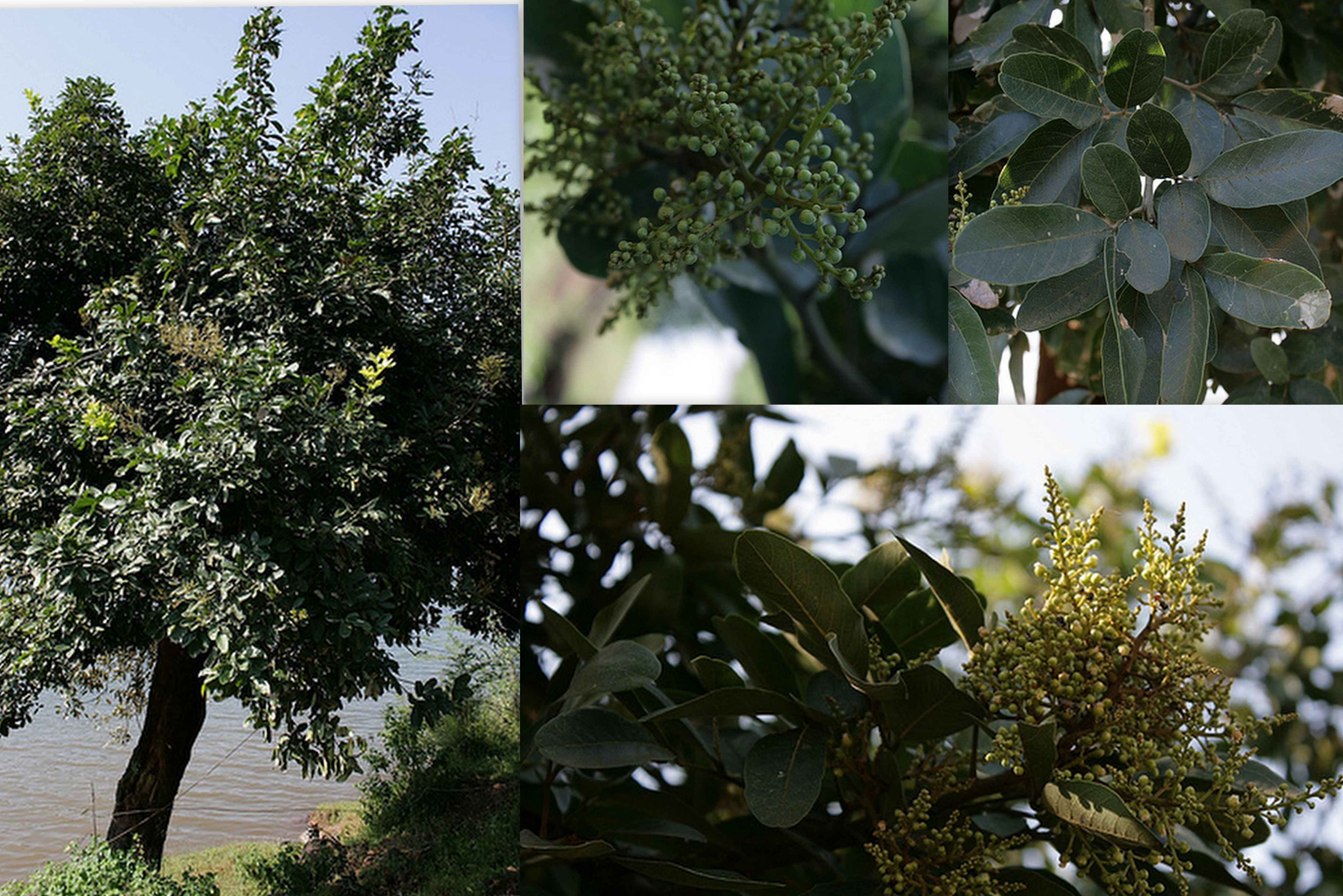|
Sapindus emarginatus Vahl, Sp. pl. 1:367. 1753 (Sapindus laurifolius var. emarginatus (Vahl) Cooke; Sapindus trifoliatus var. emarginatus (Vahl) Radlk.);
.
India (Uttar Pradesh, Bihar, West Bengal, Orissa, Madhya Pradesh, Rajasthan, Gujarat, Goa, Daman & Diu, Andhra Pradesh, Tamil Nadu, Kerala), Pakistan, Sri Lanka, Myanmar [Burma] as per Catalogue of Life;
.
Common name: Notched Leaf Soapnut • Hindi: रीठा Reetha • Kannada: Kookatakayi, Kudale-kaye, Kukate-kayi • Malayalam: Chavakayimaram, Punnan-kotta, Urvanjik-kaya, Uruangi • Marathi: aritha, rimgi, rimthi • Oriya: Ritha • Sanskrit: Arishta, arishtaphalam, Aristam, Phenila • Tamil: Ponnankottai, Manipungan maram, Poovandikottai • Telugu: Kukudu-kayalu, Kungititkaya, Kunkudu-chettu
.
Flora of Davanagere District, Karnataka, India By B. K. Manjunatha, V. Krishna, T. Pullaiah (Description & Keys- Sapindus emarginatus Vahl & S. laurifolia Vahl syn. of Sapindus trifoliatus L.)
.
As per Flora of Madhya Pradesh, BSI:
Leaflets 2-3 pairs, anthers apiculate 1. Apex of leaflets obtuse or emarginate; Petals with woolly scales- S.emarginatus Vahl
2. Apex of leaflets acute or acuminate; petals with minute scales or scales absent- S.laurifolius (syn. of Sapindus trifoliatus L.)
.
Trees, to 10 m high, bark dark-brown, rough; branchlets tomentose. Leaves paripinnate, alternate, exstipulate; rachis 25-100 mm, stout, tomentose, swollen at base; leaflets 4 or 6, opposite or subopposite; petiolule 2-3 mm, stout, tomentose; lamina 3-15 x 1.5-5.5 cm, oblong-obovate, oblanceolate or oblong, base cuneate or obtuse, apex obtuse, round and emarginate, margin entire, glabrescent above, softly tomentose beneath and midrib above, coriaceous; lateral nerves 4-12 pairs, pinnate, prominent, ascending, secondary laterals prominent, intercostae reticulate, prominent. Flowers polygamous, greenish-white, in terminal and axillary panicles; branches pubescent; sepals 5, 2-seriate, 3-4 mm, ovate-orbicular, unequal, ciliate, imbricate; petals 5, obovate, 2.5 mm, equal, clawed, glabrous on the inner surface except for 1-2 tufts of white hairs above the claw; disc annular, 5-lobed, strigose; stamens 8, inserted within the disc; filaments unequal, pilose, free; anthers oblong; ovary superior, trigonus, 3-celled, ovule 1 in each cell; style terminal; stigma 3-lobed. Fruit a drupe of 3 indehiscent cocci, combined about half way up and then separating with saponaceous fibrous pericarp; smooth and slightly pubescent when young, later glabrous and wrinkled; seeds black, globose, smooth. Flowering and fruiting: November-March
Dry deciduous forests and margins of grasslands
South Asia
(From India Biodiversity Portal (Sapindus emarginatus Vahl)
.
ID request-31032012-PKA3: Looks like Sapindus emarginatus or Soap fruit. Thanks …. It does look like Sapindus emarginatus. Leaflets 2-3 pairs, anthers apiculate 1. Apex of leaflets obtuse or emarginate; Petals with woolly scales- S.emarginatus
2. Apex of leaflets acute or acuminate; petals with minute scales or scales absent- S.laurifolia
Flora of Madhya Pradesh, BSI.
Request Tree ID 43 Bangalore – Is it Madhuca Indica?: The inflorescence looks like that of Sapindus laurifolius. Please check whether leaves are compound with 4-6 leaflets. http://www.flowersofindia.in/Notched%20Leaf%20Soapnut.html I think you seem to agree with the ID Thanks, for identifying it
It seems to match genus, species seems bit different.
But I will confirm and send another mail To me, it looks like Sapindus trifoliatus L. (= S. emarginatus Vahl) by its emarginate leaf tip. Both S. trifoliatus and S. laurifolia are hardly distinguishable from each other except by the leaf tip character.
Sapindaceae Fortnight: Sapindus emarginatus.SMP2 : 1 post by 1 author. 1 image. Sapindaceae fortnight :: Sapindus sp. ?? at Panshet ::PKA3 : Attachments (8). 2 posts by 2 authors. Sapindus emarginatus Sapindus emarginatus Vahl
outskirts of Pune on 10 JAN 13
Pls help ID Medium tree with lobed fruits from Chennai GEFEB2016:2/2 : 5 posts by 2 authors. 2 images.
Please help ID this medium sized tree from Chennai, fruiting in March. (Image is from previous year) Sapindus emarginatus – soapnut tree Many thanks to everyone who replied. I wanted to know the difference between the two species and this could be found in eflora of Pak. :
So based on the leaves this is definitely S. emarginatus, as Id-d by …. Thanks to … for the pointer.
Although I have often seen Soapnut (Ritha), had never seen the tree, so this ID is all the more valuable. Sadly, the habitat, off the Chingleput, road is fast being lost to “development”.
There is record about the presence of Sapindus mukorossi which is available in Himalayas ans Nepal. this is also called soapnut only. Tree’s sporting the summer look #11 of 15 | Soap nut tree – efloraofindia | Google Groups : 5 images. What is the insect on Sapindus Trifoliatus – South Indian Soapnut Tree?: It looks like mating bugs. For comparison http://www.discoverlife.org/mp/20p?see=I_PAO7640&res=640 Shield bugs If I Google for shield bugs (which are also called stink bugs) I don’t see that White patch. Is this a symbiotic relationship?
Unless we can systematically understand both plant and bug benefit each others in sharing resources we cant say that there is symbiotic relationship. Example the insect forages nectar from the flower that resulted in pollination or the bug takes any exudates and prevents pathogens and predators attacking the plant. There are many varieties of the Stink/shield bugs. For a more accurate identification, you could post the bugs at insectindia at yahoogroups, where many knowledgeable persons would help you. Might be a species belongs to the family Pentatomidae Agreed. This is a Stinkbug / Shieldbug of Family Pentatomoidae, possibly a species of Tessaratoma. I saw it on Sapindus emarginatus – Notched Leaf Soapnut Stink beetles Solitude | 28Aug2011AR01 from Gingee: Zoomed photo to see- Leaves appear alternate, obovate to obcordate, size-13cms approx.
Tree height 17 feet, Habitat -fields near to the foothills of Gingee.
Gingee fort, Tamilnadu,
20-Jul 2008 This is Sapindus emarginatus, I think.
Photographed this medium sized tree at Betul , MP , on 12.12.11. Height of tree was abt-10 -11 mts.
This is a species of Sapindus. My pictures for comparison (Sapindus) Looks like Sapindus laurifolius. Thank you … These are mine. My previous photographs are available at this link … images are of Sapindus trifoliatus L. only. Yes Sapindus laurifolius (most probably). To me appears close to images at Sapindus emarginatus Vahl
SMPAPR10 : 1 post by 1 author. Attachments (3)
Soapnut tree in fruiting
Sapindus trifoliatus
Pune I think it should be Sapindus emarginatus Vahl as per keys and details herein.
.
Sapindaceae: Sapindus emarginatus: 3 high res. images.
Sapindus emarginatus from Andhra University Botanical Garden Visakhapatnam Andhra Pradesh . Sapindaceae: Sapindus trifoliatus L.: 1 high res. image. Pl. see the leaf apex.
. References: Flora of Eastern Ghats: Hill Ranges of South East India, Volume 1 By T. Pullaiah, D. Muralidhara Rao, K. Sri Ramamurthy (2002- Description of Sapindus emarginatus Vahl syn. S.trifoliata sensu Heirn.) Flora of Davanagere District, Karnataka, India By B. K. Manjunatha, V. Krishna, T. Pullaiah (Description & Keys- Sapindus emarginatus Vahl & S. laurifolia Vahl syn. of Sapindus trifoliatus L.) http://www.beesfordevelopment.soapnut-sapindus-emargina.shtml |
Disclaimer
1. For any mistake in identification or for becoming efloraofindia e-group member (for contributing towards building of efloraofindia or otherwise), pl. mail to indiantreepix@googlegroups.com or itpmods@googlegroups.com
2. For better viewing of species’ pages, colour scheme & formatting is being followed as: Description of the species, Details of other flora species on the same page, Uses/ harms, Distribution, Abundance/ Location/ Flowering time & date, Habit & habitat, Etymology & pronunciation, Other interesting information, stories etc., Others, Botanical names, Common names, Main point of discussion below, Discussion about Botanical names.
Navigation
- Award for eFloraofIndia
- Colour scheme & formatting
- Copyrights, Permissions, Citations
- eFloraofIndia appreciated
- Names of Plants in India site
- Flowersofindia site
- Posting Guidelines
- For members’ information
- Logo, Tagline, Acronym
- Volunteers required
- ‘Pitamah’ of eFloraofIndia
- ‘अजेय’ ‘Ajey’ of eFloraofIndia
- ‘Saarthi’ ‘सारथि’ of eFloraofIndia
- ‘Jewel’ of eFloraofIndia
- ‘Grassman’ of eFloraofIndia

